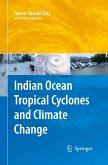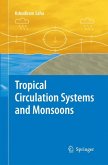This original book describes the behavior of tropical cyclones in the South Pacific. It investigates the broad range of disturbance effects these violent storms have on the physical environments of the islands that lie in their path and the people who live on them. It is the first book to link these two themes - the characteristics of cyclones and their landscape impacts. Examples and illustrations are drawn widely from across the region, resulting in a highly readable volume.
From the reviews: "Tropical Cyclones: Climatology and Impacts in the South Pacific describes the climatology, structure, and behavior of tropical cyclones in the South Pacific and ... impacts of these storms on the physical environment of the islands in their path. ... The text is ... well laid out with black-and-white photographs, tables, and graphs. ... appealing to students and professionals from the region. ... It would be an excellent resource for climatologists and educators ... . Researchers from other disciplines ... will also find this volume valuable." (Mark Sinclair, Bulletin of the American Meteorological Society, April, 2009)








